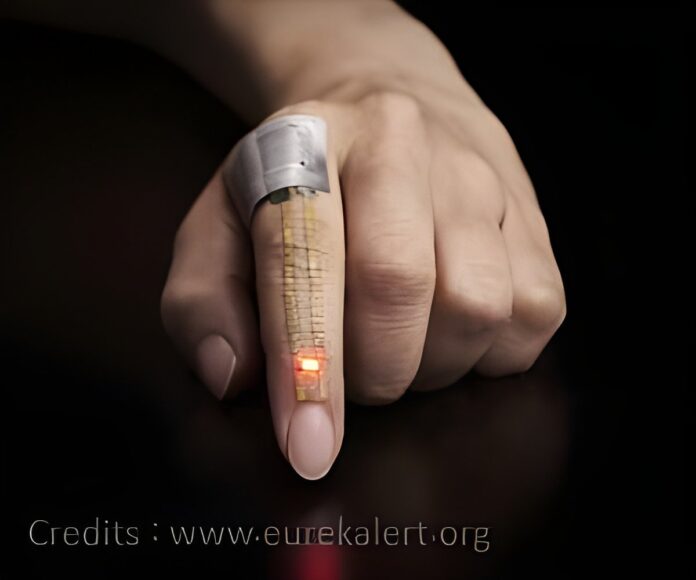A sweat sensor could assess chloride ions constantly during use. It has a protective film that intensifies its perfection.
Sweating is essential as it not only cools the body, but also regulates other mechanisms such as removing toxins, reducing stress, and maintaining body temperature. Along with the biomolecules, chemicals such as chloride and sodium ions are also present in the sweat. By measuring these chemical markers in sweat, it is possible to detect a genetic disease (1✔ ✔Trusted Source
Hydrogel-based sweat chloride sensor with high sensitivity and low hysteresis
Go to source
).
A rapid wearable sensor can calculate chloride ion levels in sweat that helps identify a genetic lung and digestive disease called cystic fibrosis, according to research published in the Biosensors and Bioelectronics.
“The traditional method of measuring chloride ion levels is to go to a hospital and have the measurements taken, which is time consuming and expensive,” said Wanqing Zhang, a doctoral candidate in engineering science and mechanics and co-author of the paper. “The wearable sensors we developed process sweat and track chloride ion levels in real time, directly on a subject’s body. This gives researchers a lot of information about an individual’s health and, specifically for this study, can identify the high chloride ion levels that signify the presence of cystic fibrosis.”
Advertisement
A Novel Hydrogel Technology
The device uses hydrogel technology to determine the chloride ion concentration. It contains a protective barrier called ‘PVDF-HFP’ film that improves its stability and reusability. Unlike colorimetric sensors, this sweat-based potentiometric sensor gives reversible and accurate values in just ten seconds.
However, using just these hydrogel solutions posed some issues, Zhang explained. Hydrogel material is a network of hydrophilic polymers, or materials highly attracted to water, meaning that water and electrolytes could easily pierce into the gels. The team used a material, known as PVDF-HFP film, to isolate their hydrogels from excess water or electrolytes that could negatively impact the sensor’s accuracy.
Advertisement
Fast and Accurate Sweat Analysis Than Existing Sensors
To test the sensor, the team conducted two different experiments. They first collected sweat from a subject exercising and analyzed it using the sensor separately from the subject’s body. They then monitored the sweat as the subject wore the sensor while exercising, tracking chloride ion levels in a software that graphs information in real time. The readings of both experiments were then compared to confirm the accuracy of the sensor’s readings.
The sensor collects data very quickly, measuring, and visualizing chloride ion levels in under 10 seconds. According to Zhang, the sensor is significantly more sensitive than existing sensors, producing readings with an accuracy of 174 millivolts per decade – nearly triple the theoretical limit of 59.2 millivolts per decade seen in potentiometric sensors. In addition to excellent reversibility, Zhang explained how the sensor’s high consistency and independence from past readings ensures easy, accurate readouts without having to make connections between multiple past readings, improving reusability.
Potential to Apply for Other Chemical Biomarkers
While their sensor was primarily designed to help identify chloride ion levels indicative of cystic fibrosis, Cheng said he believes the design is a strong foundation for future wearable devices that could sense other biomarkers.
“This sensor has opened the door for low-cost, scalable and wearable chloride sensors,” Cheng said. “We believe that the mechanics used in our design can be adapted to reversibly monitor other ions or chemical compounds that appear in sweat, like glucose, which would provide additional insight on a subject’s health. The mechanics could also be expanded to different applications and platforms beyond just wearable devices, which we are exploring now.”
Reference:
- Hydrogel-based sweat chloride sensor with high sensitivity and low hysteresis – (https://www.sciencedirect.com/science/article/abs/pii/S0956566325006815?)
Source-Eurekalert
